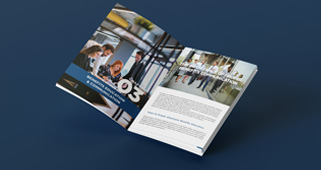In the realm of employee benefits, regulatory compliance is essential to avoid penalties and ensure that your benefits packages meet legal requirements. Two critical components in this landscape are the Form 5500 filings and ERISA wrap documents. While they may seem daunting, understanding and properly managing these elements can help your organization stay compliant with regulations, protect your employees, and streamline your benefits administration. This blog will provide an in-depth look at 5500 welfare filings and ERISA wrap documents, explaining their significance, requirements, and best practices for effective management.
Understanding Form 5500 Filings
The Form 5500 is an annual report that employee benefit plans, including welfare benefit plans, must file with the U.S. Department of Labor (DOL). The form provides information about the plan’s financial condition, investments, and operations. It is essential for ensuring transparency and compliance with the Employee Retirement Income Security Act (ERISA) and other related regulations.
What is Form 5500?
Form 5500 is a comprehensive report that includes detailed information about a plan’s financial status, compliance with regulations, and operational aspects. It is used to:
- Disclose Financial Information: The form includes financial statements and schedules that detail the plan’s assets, liabilities, income, and expenses. This helps the DOL, Internal Revenue Service (IRS), and plan participants understand the financial health of the plan.
- Report on Compliance: It includes sections for reporting compliance with ERISA requirements and other regulatory obligations, such as participant rights and benefits.
- Provide Operational Details: Information on plan administration, including service providers and plan operations, is also included. This helps ensure that plans are administered in accordance with regulatory standards.
Who Must File?
Generally, employee benefit plans with 100 or more participants are required to file Form 5500 annually. This includes:
- Pension Plans: Defined benefit plans, defined contribution plans, and other types of pension plans.
- Welfare Benefit Plans: Health insurance plans, disability benefits, and other welfare benefits.
- Multiemployer Plans: Plans that cover employees from multiple employers in the same industry.
Certain smaller plans, often those with fewer than 100 participants, may qualify for a simplified version of the form known as Form 5500-SF (Short Form), which has fewer reporting requirements.
Filing Deadlines
The deadline for filing Form 5500 is the last day of the seventh month after the end of the plan year. For example, if your plan year ends on December 31, the Form 5500 is due by July 31 of the following year. Extensions are available, but they must be requested before the original due date.
Penalties for Non-Compliance
Failing to file Form 5500 on time or accurately can result in significant penalties. The IRS and DOL may impose fines ranging from hundreds to thousands of dollars per day. Additionally, failure to file can lead to increased scrutiny and potential legal consequences.
Key Components of Form 5500
Form 5500 consists of several parts, including:
- Form 5500 (Main Form): Contains basic plan information, such as plan name, sponsor, and plan year.
- Schedule A: Provides details about insurance contracts and service providers.
- Schedule B: Includes information about the plan’s actuarial status and funding.
- Schedule C: Discloses compensation and fees paid to service providers.
- Schedule D: Reports on any delinquent participant contributions.
- Schedule G: Provides information on the plan’s investments and financial performance.
- Schedule R: Reports on retirement plan benefits and compliance with applicable regulations.
Understanding ERISA Wrap Documents
An ERISA wrap document is a type of plan document used to wrap around and supplement other benefit plan documents. It helps ensure that employee benefit plans meet the requirements of the Employee Retirement Income Security Act (ERISA), as well as other federal regulations.
What is an ERISA Wrap Document?
ERISA wrap documents are comprehensive plan documents that:
- Wrap Around Other Documents: They encompass and integrate the terms of multiple benefit plans into a single, unified document. This is especially useful when employers offer several different benefits, such as health insurance, disability benefits, and life insurance.
- Ensure ERISA Compliance: Wrap documents are designed to ensure that all benefits plans comply with ERISA requirements, which include specific provisions related to plan administration, reporting, and participant rights.
- Standardize Plan Information: They help standardize information across different benefits plans, making it easier to manage compliance and provide clear information to employees.
Why Are ERISA Wrap Documents Important?
- Compliance: ERISA wrap documents help ensure that benefit plans meet federal requirements, including those related to disclosures, claims procedures, and reporting. This reduces the risk of non-compliance and associated penalties.
- Consolidation: They consolidate various benefits plans into a single document, simplifying administration and making it easier for employers to manage their benefits programs.
- Flexibility: Wrap documents provide flexibility in plan design, allowing employers to customize benefits while still meeting ERISA and other regulatory requirements.
Components of an ERISA Wrap Document
An ERISA wrap document typically includes:
- Plan Summary: An overview of the benefits offered, including health insurance, disability coverage, and other benefits.
- Administrative Information: Details about plan administration, including contact information for the plan administrator and procedures for filing claims.
- ERISA Compliance Provisions: Sections addressing ERISA requirements, such as plan amendments, reporting obligations, and participant rights.
- Coordination with Other Plans: Provisions that outline how the wrap document coordinates with other plan documents, ensuring consistency and compliance.
Drafting an ERISA Wrap Document
When drafting an ERISA wrap document, consider the following steps:
- Review Existing Plans: Gather all existing benefit plan documents and review their terms and conditions. This will help you identify any gaps or areas where the wrap document needs to provide additional information.
- Consult with Legal and Compliance Experts: Work with legal and compliance professionals who specialize in ERISA to ensure that the wrap document meets all regulatory requirements and addresses any specific needs of your organization.
- Integrate Plan Information: Ensure that the wrap document accurately integrates information from all benefit plans, providing a cohesive and comprehensive overview.
- Update Regularly: Review and update the ERISA wrap document regularly to reflect any changes in benefits, regulations, or organizational policies. This helps maintain compliance and ensures that the document remains accurate and up-to-date.
Best Practices for Managing ERISA Wrap Documents
- Maintain Accuracy: Ensure that all information in the wrap document is accurate and reflects the current terms of the benefit plans.
- Provide Employee Access: Make the ERISA wrap document accessible to employees, typically through an employee handbook or benefits portal. This ensures that employees are informed about their benefits and their rights.
- Keep Records: Maintain records of all ERISA wrap documents, plan amendments, and other related documents. This helps with compliance and provides a reference in case of audits or inquiries.
- Monitor Regulatory Changes: Stay informed about changes to ERISA and other relevant regulations. Update the wrap document as needed to reflect these changes and ensure ongoing compliance.
Best Practices for Form 5500 and ERISA Wrap Compliance
Ensuring compliance with Form 5500 and ERISA wrap requirements involves several best practices:
1. Maintain Accurate Records
Accurate record-keeping is crucial for both Form 5500 filings and ERISA wrap documents. Maintain detailed records of plan operations, financial transactions, and employee benefits information. This helps ensure accurate reporting and facilitates the preparation of required documents.
2. Engage with Experts
Consider working with benefits consultants, legal experts, and tax professionals to navigate the complexities of Form 5500 filings and ERISA wrap documents. Their expertise can help ensure that all regulatory requirements are met and that your benefits programs are compliant.
3. Regularly Review and Update Documents
Review and update Form 5500 filings and ERISA wrap documents regularly to reflect changes in benefits, regulations, and organizational policies. Regular updates help maintain compliance and ensure that documents accurately represent your benefits programs.
4. Educate and Train Staff
Educate and train HR and benefits staff on the requirements and processes related to Form 5500 filings and ERISA wrap documents. Proper training helps ensure that staff understand their responsibilities and can effectively manage compliance tasks.
5. Monitor Deadlines
Adhere to all filing deadlines for Form 5500 and other compliance-related documents. Implement a system to track deadlines and ensure timely submissions to avoid penalties and regulatory issues.
6. Use Technology and Tools
Utilize technology and tools to streamline the preparation and filing of Form 5500 and ERISA wrap documents. Benefits administration software and compliance management systems can help automate processes and improve accuracy.
Conclusion
Navigating the complexities of Form 5500 filings and ERISA wrap documents is essential for maintaining compliance and effectively managing employee benefits. Understanding the requirements and best practices for these components can help your organization avoid penalties, streamline benefits administration, and provide valuable information to employees.
Form 5500 filings are a crucial part of regulatory compliance, providing transparency and financial reporting for employee benefit plans. ERISA wrap documents, on the other hand, ensure that your benefits plans meet ERISA requirements and provide a consolidated view of your benefits offerings.
By following best practices, engaging with experts, and staying informed about regulatory changes, your organization can effectively manage Form 5500 filings and ERISA wrap documents. This proactive approach not only helps ensure compliance but also supports a well-organized and efficient benefits administration process.






